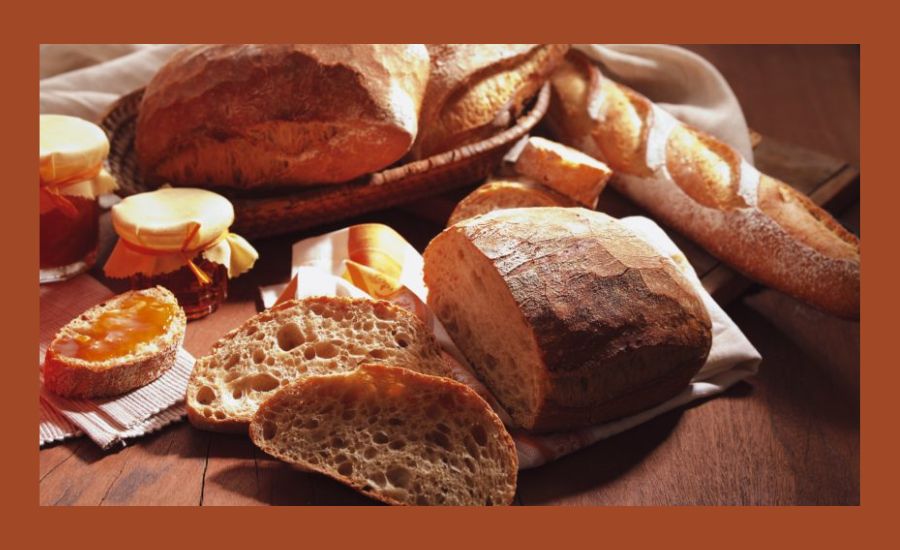Bread is a favorite food for many people around the world. The smell of freshly baked bread makes everyone happy. It is warm, soft, and can be enjoyed in many ways. Making bread might seem tricky, but with a few simple tips, anyone can learn how to bake delicious bread at home. In this article, we will share 5 tips for making the best bread that are easy to follow. Whether you are a beginner or have baked bread before, these tips will help you create wonderful loaves!
Start with Good Ingredients
To make the best bread, it is important to use quality ingredients. If your ingredients are old or not fresh, the bread may not taste good. The main ingredients you need for bread are flour, yeast, water, and salt.
Choosing Flour
Flour is the most important ingredient in bread-making. There are different types of flour, and the kind you choose can change how your bread turns out. Bread flour has more protein, which helps the bread rise better. If you want to make lighter bread, you can use all-purpose flour. For a heartier flavor, try using whole wheat flour.
When selecting flour, check the protein content. The higher the protein, the better it is for bread. Always store your flour in a cool, dry place to keep it fresh.
Picking Yeast
Yeast is what makes your bread rise. There are two common types of yeast: active dry yeast and instant yeast. Instant yeast is quicker, so be careful to use the right kind for your recipe. Check the expiration date on your yeast package to ensure it is fresh. If the yeast is old, it might not work properly.
Using Water and Salt
Water is important because it helps activate the yeast and develop gluten. Use warm water that is about 100°F to 110°F (38°C to 43°C) to activate the yeast. Too hot water can kill the yeast.
Salt is also essential for flavor. It helps control how the yeast works and strengthens the dough. Make sure to add the right amount, as too much salt can harm the yeast.
Learn How to Mix and Knead the Dough
Mixing and kneading are very important steps in bread-making. Mixing combines all the ingredients evenly. Kneading helps develop the gluten, which gives bread its nice texture.
Mixing the Dough
When mixing, combine the dry ingredients first, then add the wet ingredients. If you are mixing by hand, create a well in the flour, pour in the water and yeast, and mix until it comes together. The dough should feel a bit sticky but not too wet. If it’s too dry, add a little water; if it’s too wet, sprinkle in some flour.
Kneading the Dough
Kneading helps develop gluten, which is the structure of the bread. You can knead by hand or use a stand mixer. Knead the dough for about 8 to 10 minutes until it feels smooth and elastic. A good test is the windowpane test. If you can stretch a small piece of dough without it breaking, you have kneaded enough!
Resting the dough can help if it feels tough. Let it sit for about 10 to 15 minutes, and then continue kneading. This helps make the dough easier to work with.
Proofing: Letting the Dough Rise
Proofing is the process of letting your dough rise. This is important because it allows the yeast to ferment, which gives the bread its flavor and light texture. Most bread recipes call for two proofing stages.
First Proofing
After kneading, place the dough in a bowl and cover it. Let it rise in a warm place, around 75°F to 85°F (24°C to 29°C), for about 1 to 2 hours. The dough should double in size. A good tip is to cover the bowl with a clean kitchen towel or plastic wrap to keep it warm.
Be patient! If you rush this step, the bread can turn out dense. Let the dough rise fully to get the best results.
Shaping the Dough
After the dough has risen, punch it down gently to release excess air. Now, you can shape it into a loaf or roll. Be careful not to deflate it too much while shaping. Use the technique that suits the type of bread you are making.
Second Proofing
Once shaped, let the dough rise again for a shorter period. This second proof helps develop the bread’s structure. It usually takes about 30 minutes to 1 hour. The dough should feel puffy. Press it gently; if it springs back slowly, it’s ready to bake.
Baking the Bread to Perfection

Baking is where the magic happens! When you place the dough in the oven, it rises and forms a crust. Here are some tips to help you bake the best bread.
Preheating the Oven
Always preheat your oven according to the recipe. A cold oven can affect how well your bread rises. It is usually best to bake bread at a temperature between 375°F to 450°F (190°C to 230°C).
Using a Baking Stone
For a nice crust, consider using a baking stone. It helps heat the bread evenly. You can also create steam in the oven by placing a shallow pan of water inside. This makes the crust crispy and golden.
Checking for Doneness
To know if your bread is ready, check its internal temperature. The bread should reach between 190°F to 210°F (88°C to 99°C). Another trick is to tap the bottom of the loaf; if it sounds hollow, it’s done!
Read Here About: Shropshire-wonderdays
Troubleshooting Common Problems in Bread Making
Sometimes, even experienced bakers face challenges while making bread. Here are some common problems and how to fix them.
Dense or Heavy Bread
If your bread is too dense, it may be due to not kneading enough or not using enough yeast. To fix this, knead the dough longer to develop gluten. Also, check if your yeast is fresh and adjust the water-to-flour ratio as needed.
Bread Doesn’t Rise
If your bread didn’t rise, it could be because the yeast was dead or not activated properly. Make sure to use warm water when mixing. If the dough is in a cold area, move it to a warmer spot to help it rise.
Crust Too Hard or Thick
If the crust is too hard, the oven temperature might be too high, or the bread didn’t bake long enough. Lower the temperature and bake longer for better results. Using steam in the oven can also help create a thinner crust.
Crumbly Bread
Bread that crumbles easily could have too much flour or insufficient kneading. To solve this, measure the flour accurately and knead the dough properly to develop gluten.
Conclusion
Making the best bread is a fun and rewarding experience. With good ingredients and these easy tips, you can bake delicious bread at home. Don’t worry about making mistakes; every loaf is a chance to learn something new. So gather your ingredients, roll up your sleeves, and enjoy the process of making bread!
By using these 5 tips for making the best bread, you will soon be a baking pro. Enjoy your homemade bread with family and friends. Happy baking!
FAQs
Q: What type of flour is best for bread-making?
A: Bread flour is the best choice because it has a higher protein content, which helps the bread rise and develop a better texture. You can also use all-purpose flour for lighter bread.
Q: How do I know if my yeast is active?
A: To test yeast, dissolve it in warm water (about 100°F to 110°F) with a little sugar. If it bubbles and foams after about 5-10 minutes, it is active and ready to use.
Q: Why is my bread dense?
A: Dense bread can result from not kneading enough, using old yeast, or not allowing the dough to rise properly. Ensure you knead thoroughly and let the dough double in size.
Q: What should I do if my dough is too sticky?
A: If the dough is sticky, sprinkle in a little more flour while kneading. Be careful not to add too much, as it can make the bread dry.
Q: How can I make my bread crust crispy?
A: For a crispy crust, preheat your oven and consider using a baking stone. Adding steam to the oven by placing a pan of water inside also helps achieve a nice crust.
Q: How do I store homemade bread?
A: Store homemade bread at room temperature in a breadbox or a paper bag to keep it fresh. For longer storage, slice the bread and freeze it in an airtight bag.
Q: Can I make bread without a stand mixer?
A: Yes! You can mix and knead the dough by hand. It may take more time, but it’s perfectly fine and can be quite satisfying.
Q: How long does it take for bread to rise?
A: The first rise usually takes 1 to 2 hours until the dough doubles in size. The second rise takes about 30 minutes to 1 hour.
Q: What temperature should I bake bread?
A: Most bread recipes recommend baking at temperatures between 375°F to 450°F (190°C to 230°C). Always preheat the oven before baking.
Q: Can I add ingredients like nuts or fruits to my bread?
A: Yes! You can add nuts, fruits, or herbs to your dough. Just fold them in gently after the first rise for the best results.
Discover Next: Coffemanga


